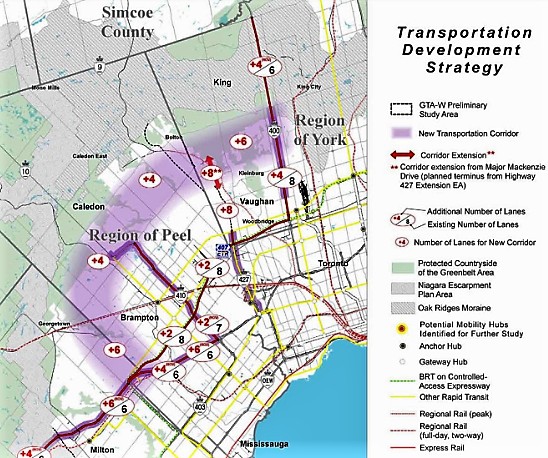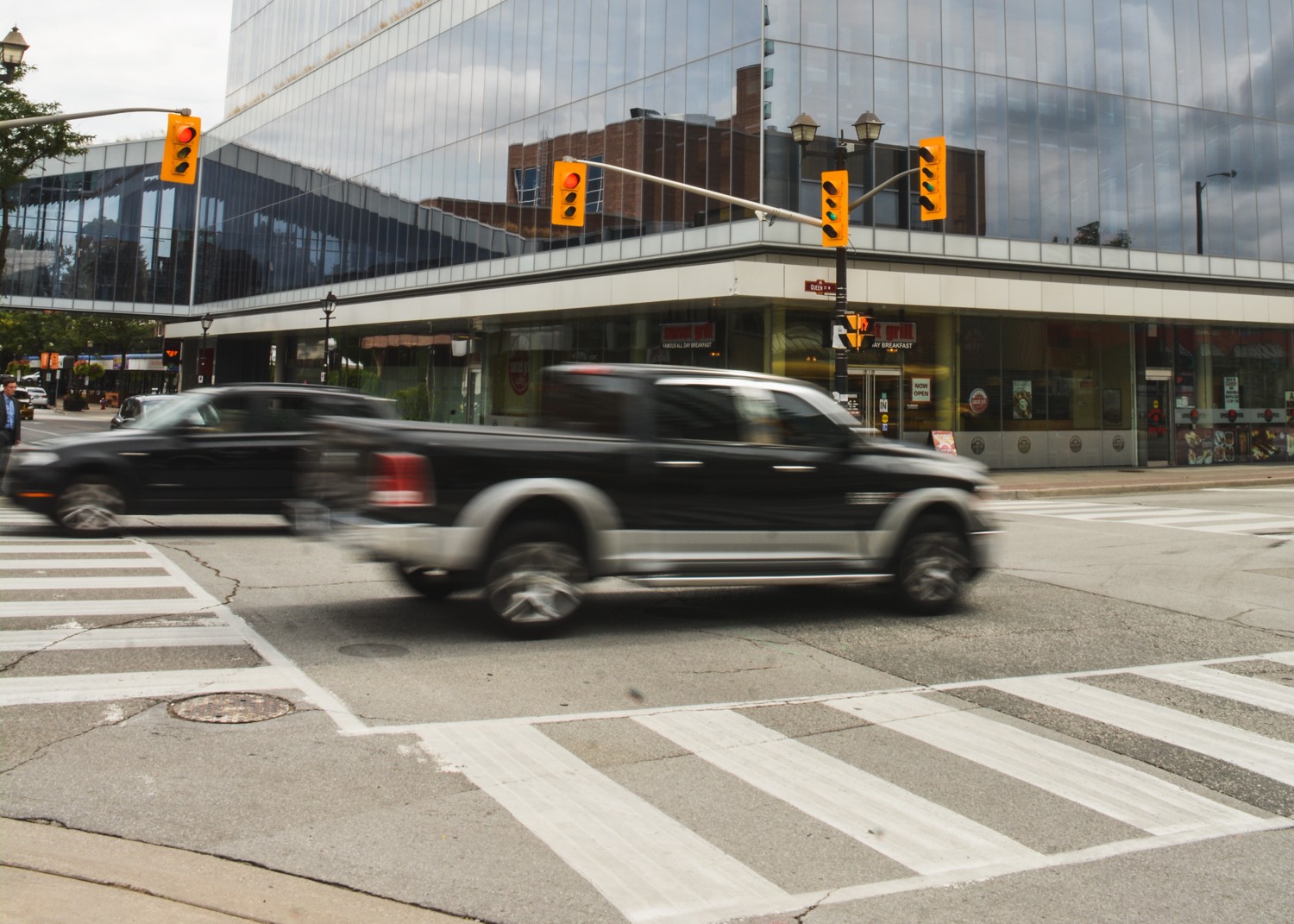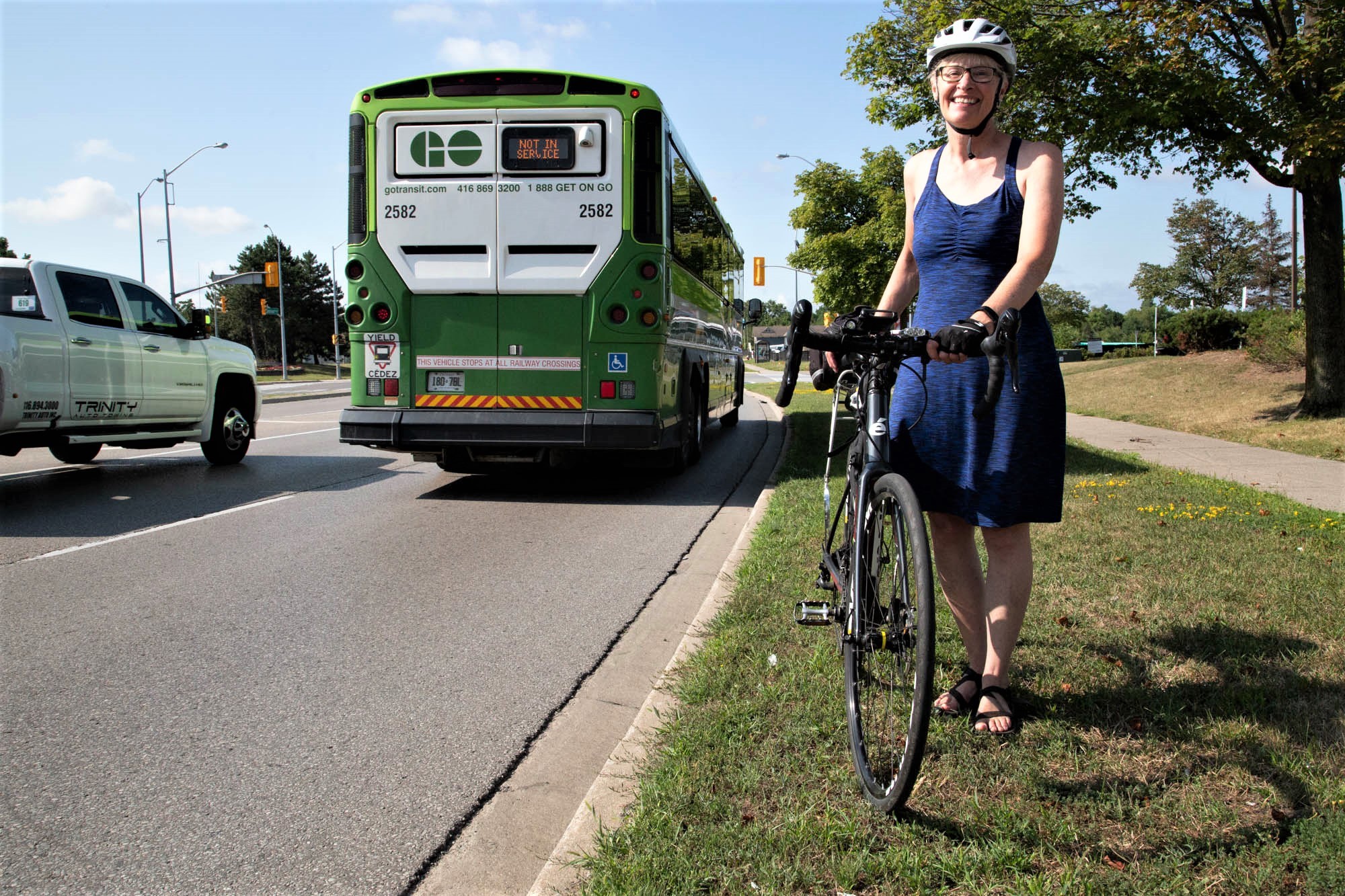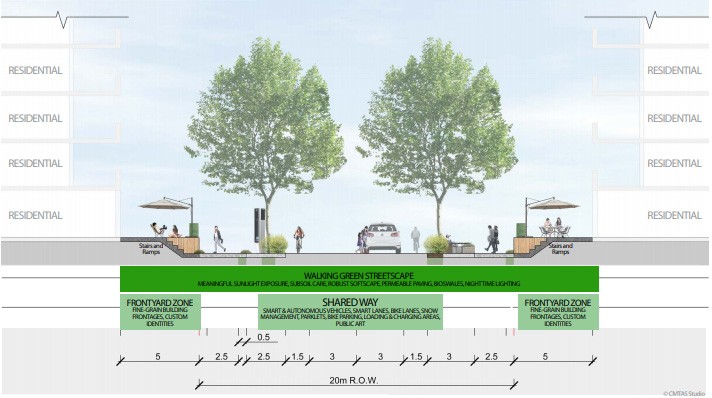
Brampton making the right noises on climate change, but big-impact projects remain a dream
In June the City of Brampton took a bold step, at least rhetorically, in its bid to tackle climate change, by unanimously passing a motion declaring a climate emergency. However, in the same session, councillors also voted to back a major new highway, known as the 413, to run through the west of the city.
Brampton’s haphazard attempt to throw its weight behind climate action, which left many observers shaking their heads, seems at odds with the urgency demanded by the United Nations’ Intergovernmental Panel on Climate Change (IPCC), which says the most disastrous impacts of climate change are far closer to becoming a reality than previously predicted. A recent report backed by more than 6,000 scientists called on local governments to do their part by tackling two major issues contributing to the problem: urban sprawl and vehicle pollution.
The Proposed GTA West Highway corridor

As an urban centre guilty of the very issues highlighted by the IPCC, Brampton should be at the forefront of the global battle against climate change. Speaking to The Pointer on the subject, Councillor Doug Whillans described it as “likely my top priority.”
Whillans, who sits on the Environment Advisory Committee at city hall, said “the City of Brampton has an opportunity to lead by example in terms of fighting climate change, by identifying projects that will achieve social, economic and environmental objectives that are necessary to increase funding and partnership opportunities.”

Brampton Councillor Doug Whillans
Fighting climate change takes place on two fronts, he said: mitigation and adaptation. At the centre of Brampton’s mitigation strategy is a soon-to-be-born centre for sustainability.
“We are in the process of creating an Institute for Sustainable Brampton, [where] the focus will be on energy, and [which] will be nonpolitical, made up of stakeholders from the community. We are starting the consultation stage of what this may look like.”
The city’s plans to respond to climate change predate June’s declaration by nearly a decade; initial suggestions were drawn up in 2012 to support what became the city’s Environmental Master Plan. The plan, published in 2014 under the previous city hall administration, lays out a vision for a greener, cleaner Brampton across 46 pages.
The plan is supposed to be revisited every five years, meaning that the current council will soon be asked to consider its progress and lessons learned over the past half-decade.
A recent presentation to the Environment Advisory Committee offered a snapshot of how the plan will be adapted, saying some of its aims were now reflected in the city’s core documents. However, the presentation also suggested it’s time to concentrate actions by “streamlining the EMP [Environmental Master Plan] Action Plan” to “focus on fewer, more impactful actions that will measurably move the city forward.” That is to say: major projects are needed to bring about significant change.
The Environmental Master Plan, which, combined with the Brampton 2040 Vision, remains the city’s guiding strategy for climate-change prevention, lays out the city’s aims in broad strokes. It emphasizes the role of individual Bramptonians and fostering a community sense of responsibility.
The plan discusses environmental policy and responsibility in six separate categories, logically dividing a complicated issue into bite-size chunks: people, air, land, water, energy and waste. These six parts, though, are not all created equal. “People” refers largely to education programs for city workers and the public, while “water” covers clean water and reducing water waste. “Land” tackles preserving Brampton’s green spaces, including plans to develop and maintain an inventory of community environmental programs. “Waste” is somewhat redundant, given the Region of Peel’s primary responsibility for most recycling and disposal policies.
However, “air” and “energy” refer to two monumental tasks that include reducing greenhouse gas emissions from all city-owned buildings and transit vehicles, improving air quality and encouraging greener modes of private transport. Issues such as these present difficult challenges to a Brampton administration that heralded the 2019 budget as giving residents the lowest tax increase “in nearly 20 years.”
The city has been successful in following through with simple tweaks and gradual changes to accommodate various recommendations. A partnership with Sheridan College, put forward by Councillor Whillans, to reduce building emissions; eight new electric buses funded by Ottawa; and a public awareness campaign under the slogan “Don’t Be Trashy” have all gone some way to improving Brampton’s ecological footprint.
Yet, small actions tend to have equivalent effect. The 2014 Master Plan also lists a plethora of big-ticket projects with potentially much more drastic impacts on Brampton’s contribution to climate change. Two of those revolve around a single local issue touched upon by the IPCC: in 2019, Brampton remains the city of the car.

The 2014 Master Plan suggested implementing the Hurontario-Main Street LRT project from the heart of Port Credit right into downtown Brampton, providing a zero-emissions travel option for Bramptonians. It also suggested creating reserved lanes and timed lights that would give public transit priority. Together, these expensive and disruptive projects could allow at least some Bramptonians to leave their cars at home without too much impact on their daily lives. But so far, council has favoured tweaks and shuffles to slightly reduce the city’s carbon footprint rather than the big projects the updated Master Plan is expected to suggest this fall.
As reported by The Pointer, council has continued to drag its heels on the issue of an LRT, unable to agree upon key details. The current major point of contention centres around Mayor Patrick Brown’s hope of tunnelling the project rather than running it at surface level. Indecision at City Hall on this topic means that, five years after the Environmental Master Plan was published, ground being broken on a Main Street LRT remains a distant dream.
That’s not to disregard the changes being made — the city’s Energy and Emissions Management Plan (2019-2024) shows progress in reducing Brampton’s greenhouse gas emissions in line with federal targets. In 2017, emissions decreased by 13 percent compared to emissions from a 2010 baseline year, while $5.8 million was recovered between 2014-2019 through energy conservation, third-party environmental funding and energy procurement. It should be noted, though, that this figure casts some doubt on whether the city can possibly reduce emissions by a further 30 percent by the deadline of 2030.
The Energy and Emissions Management Plan is one of the most recent documents available to give insight into the city’s progress since 2014. Steps taken include the introduction of a geothermal heating and cooling system at the Springdale Library, solar thermal systems at fire stations, and introduction of a PV solar system at Cassie Campbell Community Centre.
The Brampton 2040 Vision also reveals ambitious, if not detailed, plans to alter the very soul of Brampton to reduce environmental impacts. The plan points to dissatisfaction among Bramptonians at the way city streets are designed, which discourages walking and active transportation: “people say streets are often too wide, devoid of trees and furniture, dangerous for pedestrians and cyclists, noisy, and degrading of the environment.”

Brampton resident Dayle Laing is one of many calling for better alternative transportation design
Plans under the Brampton 2040 Vision to “rethink” street design represent a revolution in city planning for Brampton, placing pedestrians first and vehicles second. Redeveloping the very fibre of the city over the next 20 years could be based upon a model of “complete streets.” The idea of complete streets, promoted by the Centre for Active Transportation, has already been deployed in other areas of the GTA, though it has yet to appear in Peel Region.
The concept refers to designing streets in a way that makes room for everyone — expanding cycle lanes, sidewalks and transit space, at the expense of some of the surface area designated for cars. In Hamilton, for example, a 3.4-kilometre stretch of Cannon Street was transformed to include a protected cycling lane and a transit lane, at the cost of $710,000. With street redesign in mind, a presentation will be made to the city this fall as part of the Active Transportation Master Plan. It will include a manual for bringing the “complete street” idea to Brampton, something that city documents suggest could draw “national and international” interest.

The "complete street" concept.
Unprecedented recent rises in transit use in the city have contributed to the demand to rethink roads and city planning. Ridership on Brampton Transit grew by 18 percent in 2017 and 14 percent last year, light years ahead of the national average of 1.5 percent. As a result, almost 40 percent of routes on the city’s buses experienced overcrowding, according to the 2019 council budget. In line with the city’s climate ambitions, the municipal bus fleet will increase by 16 percent over the next three years, aiming to reduce overcrowding and perhaps one day run more buses along “complete streets” in Brampton’s downtown core.
Whillans told The Pointer that a formal declaration of a climate emergency would lead to greater support for public and active transit, despite city hall’s history of championing the car. “I believe that with our climate emergency declaration, our investment will continue, not only in our transit, but in our active transportation as well. This is an important factor to help lessen reliance on a car.
“With respect to the 413 highway, my thoughts — and I am sure other councillors feel the same way — are that a decision has to be made either way so we can start the planning process to build a sustainable community in the northwest section of Brampton. Although some past policies seem to appear to strongly favour the car, the City of Brampton is taking steps to build more complete communities. Unfortunately, like many other North American cities of our size, the reliance on a car has become the norm.”
When it comes to tackling climate change, the city is making the right noises. But there is always the danger that, as happened with the botched climate emergency declaration, its leaders will struggle to keep their promises.
The 2014 Master Plan proposed a host of policies ranging from improving cycling infrastructure to establishing metrics to measure corporate greenhouse gas emissions. The updated plan is expected to focus on the big projects that will leave a bigger impact — big projects the city has a history of shying away from, and which are likely to be costly to taxpayers. In dealing with the minutiae first, Brampton is acting as if what we are facing is a climate situation — not an emergency.
Email: [email protected]
Twitter: @isaaccallan
Submit a correction about this story


